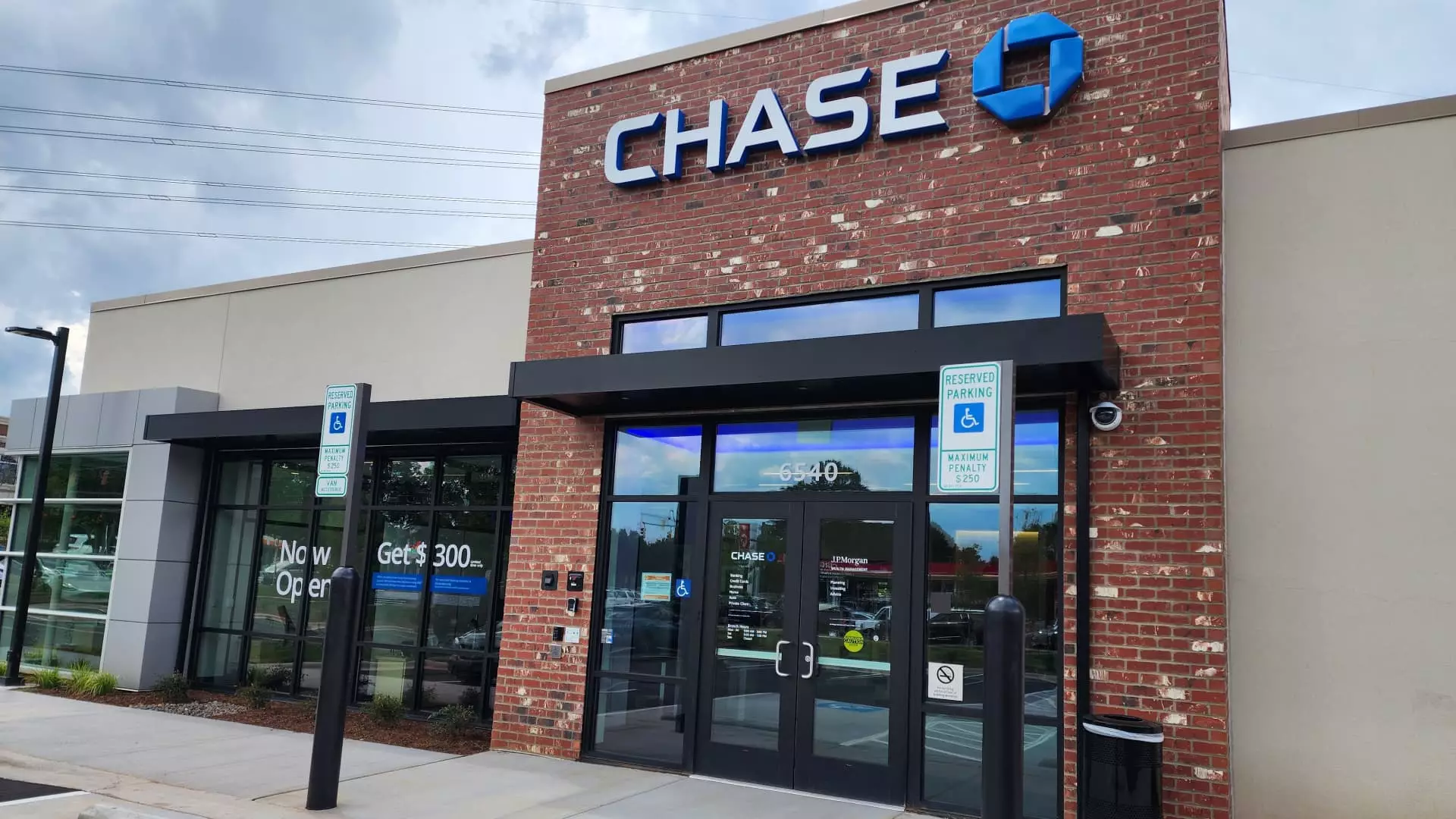In an era marked by digital innovation and shifting consumer preferences, JPMorgan Chase’s rapid expansion of brick-and-mortar branches appears increasingly audacious. Over the past seven years, the banking giant has added more than 1,000 branches—more than most competitors combined—boasting a total of approximately 5,000 locations nationwide. This aggressive footprint expansion runs counter to the prevailing trend of branch closures and digital banking dominance. While critics tout this as a nostalgic reversion to traditional banking, a closer look suggests that Chase’s strategy might be more about political optics and market dominance than sound economic fundamentals. The question that resonates is whether this expansion is a calculated move to leverage regional advantages or an overreach that could saddle the bank with unnecessary costs.
Much of the logic for the expansion heavily relies on regional dominance and capturing deposits in key markets like Charlotte, North Carolina. The move into an already competitive city—dominated by Bank of America with a staggering 71% market share—is a clear sign of JPMorgan’s desire to contest regional hegemony. It seems as if Chase is gambling that physical presence will sustain its relevance amid rapid digitization, but what’s the true cost of this strategy? Large-scale branch networks require significant investment—not only in construction but also in staffing and operational costs—that may not justify the incremental deposits they aim to attract.
Is Physical Presence Still a Strategic Asset or a Financial Liability?
The financial industry’s pivot toward online banking has largely rendered physical branches a luxury for most consumers rather than a necessity. Digital platforms offer convenience, speed, and lower costs—attributes that online users increasingly prioritize. JPMorgan’s own data claiming branches will break even within four years might seem impressive on paper, but it glosses over the evolving customer preferences and the economic reality that digital banking travel light, with much lower ongoing costs. The question arises: Is JPMorgan chasing a relic, or does it genuinely believe that foot traffic from traditional branches will create meaningful, long-term value?
Suppose this aggressive expansion is driven by a desire to cement regional dominance and maintain political goodwill. In that case, Chase may be overlooking the fundamental shift toward a digital-first banking experience. Policymakers and regulators, often influenced by the scale and visibility of large financial institutions, might view extensive branch networks as a sign of stability and strength—not necessarily reflecting the modern banking consumer’s priorities. This misconception could lead JPMorgan astray, burdening it with assets that may become obsolete or underutilized in just a few years.
Is This a Calculated Risk or a Theoretical Bet?
JPMorgan’s leadership champions this expansive growth as a testament to their “long-term marathon” philosophy. Their investments are justified by projections that each branch will generate hundreds of millions in incremental deposits, positioning the bank as a dominant regional player. Yet, this optimism rests on the assumption that consumers will continue to favor physical banking in a post-pandemic era where contactless and digital transactions have become standard.
Furthermore, competitors like Bank of America and Wells Fargo are also recalibrating their strategies, announcing similar expansion plans. This race to expand physical footprints seems driven less by consumer demand and more by a desire to politically secure markets or appease regulators, who often favor visible symbols of economic strength. Such strategies might secure short-term market share but threaten long-term profitability, especially if the core driver—consumer engagement—is waning.
JPMorgan’s substantial investment in physical infrastructure could be viewed as a calculated gamble aimed at reinforcing its market presence. However, given the rapid technological evolution and changing consumer preferences, this approach may ultimately prove to be an overleveraged attempt to cling to an outdated paradigm. The top-down strategy may provide regional advantages but risks diverting resources from more sustainable innovations that could define the modern banking landscape.
In sum, JPMorgan Chase’s significant expansion reflects a complex mix of tactical positioning and perhaps a touch of strategic hubris. While the bank boasts impressive numbers and a bold regional push, the broader industry trends suggest that such extensive brick-and-mortar growth may be misplaced. The financial world is inexorably moving toward digital, and large physical networks could become liabilities rather than assets.
This aggressive footprint-building can be interpreted as an attempt by JPMorgan to project strength and stability, especially in a competitive and often politicized industry. Yet, from a pragmatic, center-right perspective, it is a risky endeavor, prioritizing appearances over innovation. To remain truly competitive, JPMorgan must balance its expansive ambitions with a realistic understanding of the shifting landscape—embracing digital transformation without turning its back on the legacy of physical banking that, in many regions, still holds strategic importance.

